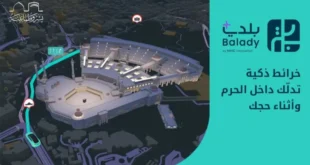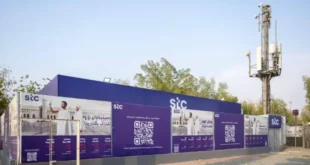National warehouse occupancy levels in Saudi reached a record high of 97% at the end of H1 2024, underpinned by robust levels of demand for warehouse and light industrial units (LIU), according to according to global property consultancy Knight Frank’s Saudi Arabia Industrial and Logistics Market Review H1 2024.
The warehouse and logistics sector across Saudi Arabia has experienced impressive growth in occupancy levels and average monthly lease rates per square metre over the last few years, supported in big part by strategic government initiatives, as well as substantial investments in warehousing infrastructure, industrial facilities and logistics, says Knight Frank.
RIYADH
Riyadh has been a standout performer in the Kingdom, experiencing a 10.4% year-on-year increase in average lease rates for light industrial units and Grade B warehouse space, which now stand at SAR 210 psm. Notably, Logistic Park Riyadh commands the highest rates in the city at SAR 290 psm and is also fully occupied.
On the supply front, Riyadh is home to 28 million sqm of warehouses, with another 820,000 sqm of industrial and logistics space under construction in various districts of Riyadh, with majority of under construction supply located in the Industrial Gate district (456,000 sqm) followed by Jabal Ali district (130,000 sqm).
Knight Frank also highlights the various giga-projects underway across the city as being a key source of new and long-term demand for warehousing.
Faisal Durrani, Partner – Head of Research, MENA, explained: “By their very nature, Riyadh’s giga-projects are driving up warehousing demand levels not only for the storage of construction and building materials, but they are also catalysing the emergence of new and dedicated industrial and logistics hubs. Riyadh’s new supercities include the development of vast new transportation networks and commercial complexes, all of which are also underpinning substantial demand for storage and distribution facilities across the city.
In addition, the flourishing e-commerce sector is contributing to rising requirements for storage facilities, last-mile distribution hubs, logistics facilities as well as cloud and dark kitchens, particularly as the popularity of online shopping and food delivery apps continues to surge”.
JEDDAH
Mirroring the trend in Riyadh, Jeddah’s warehouse and logistics sector has also seen an increase in supply over the past 12 months, bringing the total warehouse and logistics facility stock to 19.6 million sqm. Notable projects including Maersk’s logistics park and Aramex’s warehouse, as well as multiple facilities developed by Logi Point in Zahid Business Park. Jeddah’s strategic location as both a gateway to the Kingdom and a key hub for transshipment operations makes it a prime area for logistics development.
Jeddah Islamic Port’s proximity to major shipping routes and its role in facilitating trade between Saudi Arabia and other regional markets underscore its importance in the broader logistics landscape. By the end of H1 2024, Jeddah’s market-wide average warehouse lease rates for light industrial units and Grade B facilities stood at SAR 208 psm, with a corresponding average occupancy rate of 97%.
GOVERNMENT INITIATIVES
According to Knight Frank, demand and growth in the Kingdom’s industrial sector is being catalysed by programmes and initiatives connected to Vision 2030, which aims to diversify the economy and reduce its reliance on oil. The National Industrial Development and Logistics Program (NIDLP), for instance, a cornerstone of Vision 2030, seeks to position Saudi Arabia as a global industrial leader and logistics hub by establishing industrial cities and special economic zones (SEZs) across the Kingdom. In addition, The National Industrial Strategy, announced by SIDF, aims to increase the value of industrial exports to SAR 557bn by 2030. Over the past five decades, SIDF has provided loans exceeding SAR 180bn to more than 4,000 projects, with total investments reaching approximately SAR 700bn
Amar Hussain, Associate Partner – Research ME, added: “We are currently tracking five special and economic zones spread around the Kingdom. These zones offer attractive incentives and state-of-the-art infrastructure to entice both local and international investors, driving significant industrial growth. In addition, Saudi Arabia’s position on both the Arabian Gulf and the Red Sea, which handles 13% of global trade, provides distinct advantages to its position as an additional gateway to markets totalling over 6 billion people.”
SAUDI ARABIA’S INDUSTRIAL MARKET OPPORTUNITY
According to Knight Frank’s analysis, Saudi Arabia is currently facing a shortage of warehousing, a situation exacerbated by the cautious investment behaviour of landowners, with Riyadh experiencing the most severe shortage of warehouse space, driven by the rapid economic growth and the increasing demand for modern logistics solutions.
Mikhail Vereshchagin, Associate Partner – Industrial & Logistics KSA, concluded: “The shortage of Grade A warehousing space in Saudi Arabia reflects broader trends in the region’s industrial and logistics sector. The ongoing expansion of e-commerce, the rise in consumer demand, and the Kingdom’s ambitious Vision 2030 initiatives are all contributing to the increased need for state-of-the-art warehousing facilities. Yet, the gap between supply with Grade A specification and demand highlights the challenges of rapidly scaling up infrastructure to meet these evolving needs.”
Additionally, the development of high-quality warehousing facilities is crucial for supporting Saudi Arabia’s role as a logistics hub in the Middle East. The country’s strategic location, coupled with its ongoing investments in transportation and infrastructure, positions it as a potential leader in regional trade and logistics.
However, overcoming the current shortage of warehousing spaces will require not only investment but also a shift in the approach to development, with a greater emphasis on collaboration between local and international players.
 ياهلا بوابة السفر والسياحة
ياهلا بوابة السفر والسياحة




